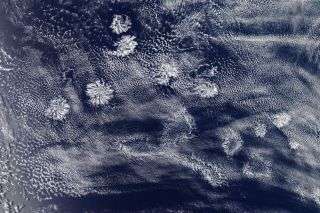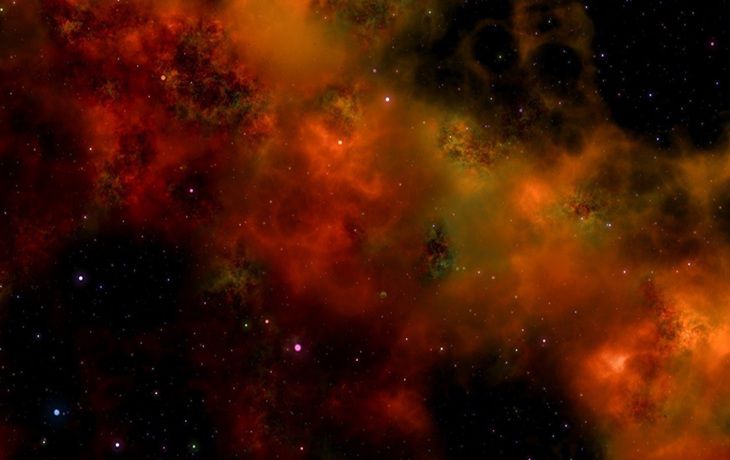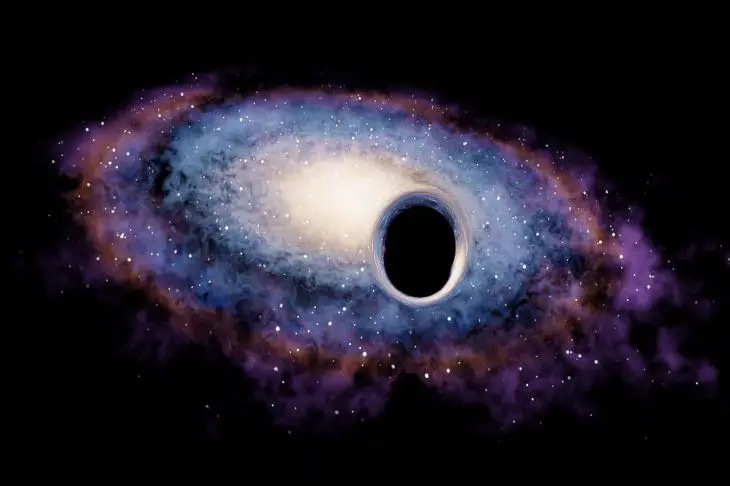
An instrument on NASA’s Aqua satellite captured this image of actinoform clouds form near Australia on Jan.29..
A person lounging on a patch of grass dreaming up images in the clouds will typically have only the familiar puffs and streaks to work with. But a satellite passing overhead can see an entirely different canvas.
On Jan. 29, an instrument on NASA’s Aqua satellite captured a photo of cloud forms that look like bursting fuzzballs near the west coast of Australia, according to NASA’s Earth Observatory, which released the image Friday (Feb. 7). These fuzzballs, or actinoform clouds, are impossible to see from the ground, because they are just so big, sometimes stretching as far as 180 miles (300 kilometers) across, which is a little over the width of Florida.
Actinoform clouds have arms called “actiniae” that reach out in all directions, but the clouds can take on various shapes, such as a more leaf-like structure, according to the Earth Observatory. The clouds sometimes appear to be lined up and sometimes scattered about the sky, as they are in this new image.
These types of clouds typically form relatively lower in the atmosphere, around 6,600 feet (2,000 meters) high, in an area usually dominated by stratocumulus clouds, those superpuffy and thick clouds. “This scene is interesting because it’s a little to the north of the typical stratocumulus region to the west of Australia,” Michael Garay, a cloud researcher at NASA’s Jet Propulsion Laboratory, told the Earth Observatory.
Actinoform clouds were first captured by NASA’s Television Infrared Observation Satellite V in 1962, but not much is known about how they form; previously, scientists saw a link between actinoform cloud formation and the use of aerosols, according to the observatory. But in this case, the clouds over Australia were found to be so far from land that it’s difficult to point to aerosols as the cause, Garay said.
These clouds can linger for up to 72 hours and typically release some raindrops on the daydreamers below.
Sourse: www.livescience.com





